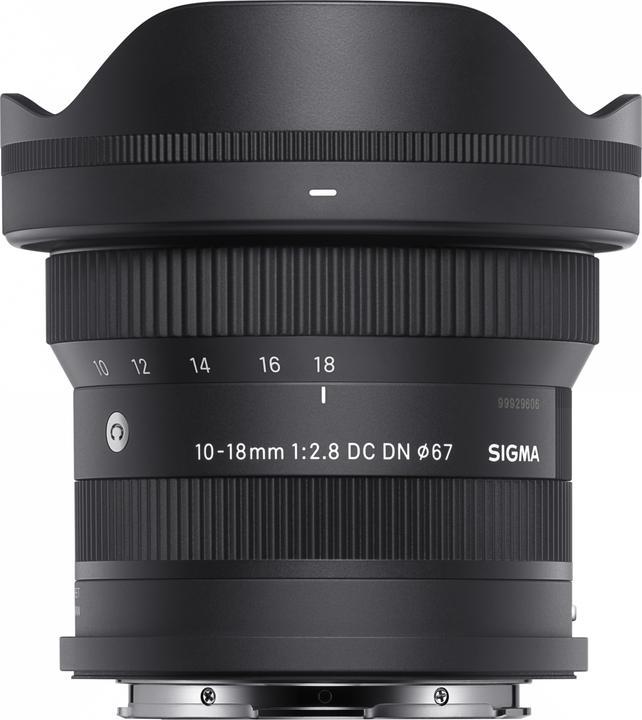
Sigma 10-18mm f/2.8 DC DN Contemporary, Canon RF
Canon RF, APS-C / DX

Sigma 10-18mm f/2.8 DC DN Contemporary, Canon RF
Canon RF, APS-C / DX
What does DX mean? Does this lens fit on an RF full frame? Is it satisfactory?
Compared to the Canon RF-S 10-18 with a continuous 2.8 aperture, the lens is much faster and can therefore also be used well in difficult lighting conditions. I am very satisfied with it.
In terms of the bayonet, the lens would fit on an RF full-frame, but the image section would be cropped. The lens is intended for the APS-C format, e.g. Canon EOS R8, R7, R10 or R50, which have an APS-C sensor.
The APS-C format does not describe a uniform standard as it is not standardised. The exact size of an APS-C sensor can vary depending on the manufacturer and has an approximate size of 22.2 x 14.8 mm. This results in an aspect ratio of 2:3. Nikon uses the designation DX for its sensors of the same format. This means that APS-C and DX sensors are basically the same thing. As the APS-C format is smaller than the 35 mm format, photographers must take into account a crop factor of around 1.5 - 1.6 for Canon.
The Canon RF mount is the same for APS-C and full-frame format. So it also fits on a full-frame. Whereby the Sigma Contemporary lenses were specially developed for APS-C. According to Sigma:
SIGMA DC lenses feature the same Canon RF mounts as the full-frame lenses, and thus, can technically be mounted to full-frame, but you will notice significant vignetting on full-frame cameras, since the smaller image circle will not cover the entire sensor. If you decide to use a DC lens on a full-frame camera, be advised you will need to manually crop the image or utilize an auto crop mode in the camera's menu.